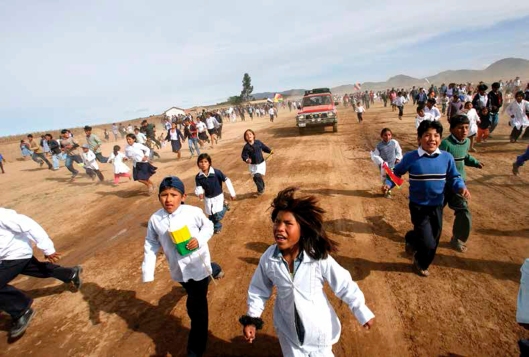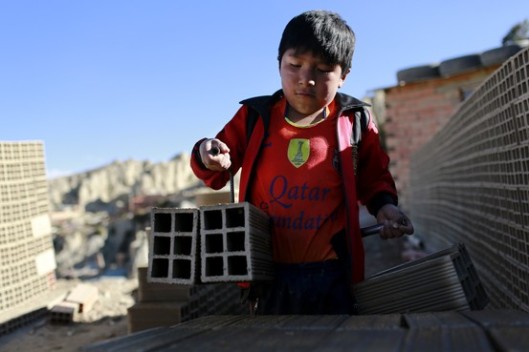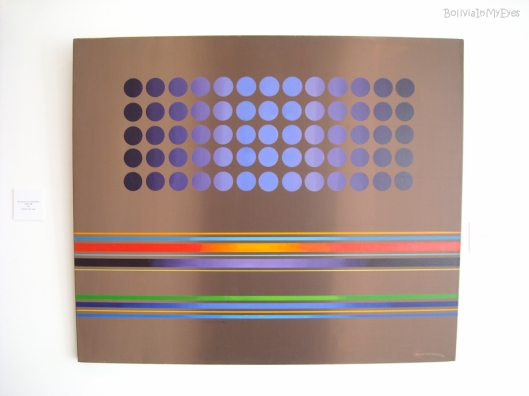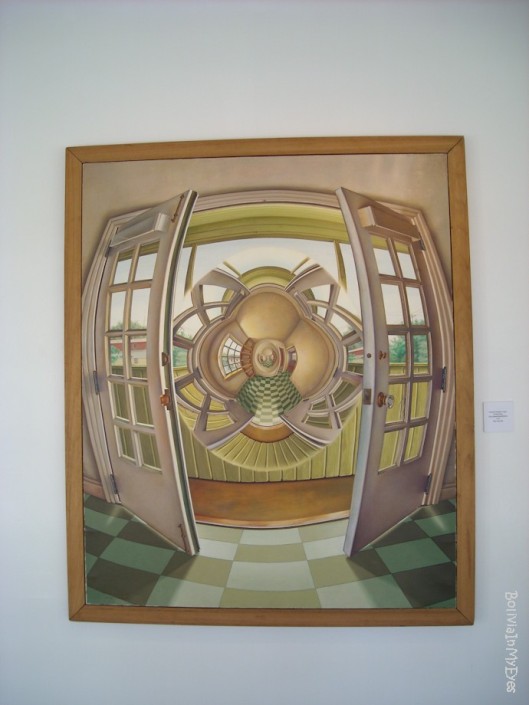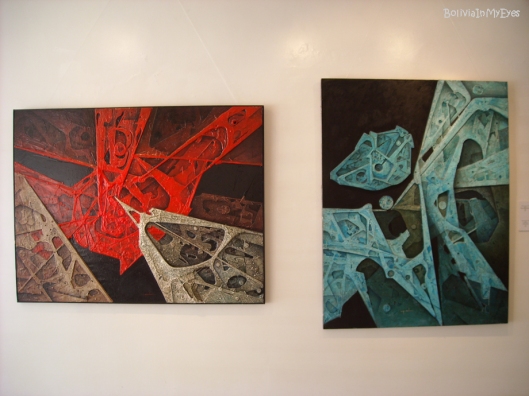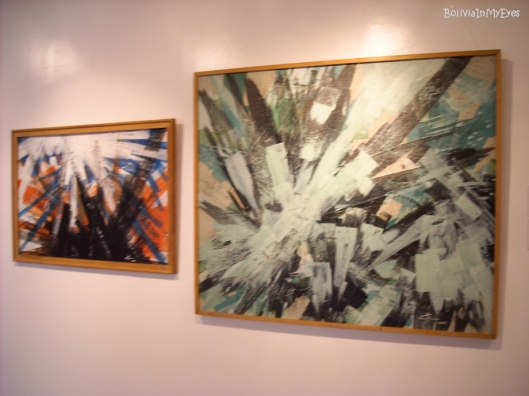W zeszly piatek uczestniczylam w otwarciu wystawy amerykanskiego fotoreportera o swojsko brzmiacym nazwisku: Noah Friedman – Rudovsky, w Centro de la Cultura Pluronacional Santa Cruz. Przyznam, juz dawno nie bylam tak zaintrygowana zarowno sama wystawa jak i artysta. Jednym z powodow jest to, iz zaprezentowane zdjecia pochodza z lat 2004-2007, kiedy Boliwia przechodzila swoista transformacje, przygotowujac sie do wyboru pierwszego Indianskiego prezydenta. Drugim powodem jest zas to, iz Noah Friedman – Rudovsky wykonal wiekszosc zdjec bedac oficjalnym fotografem Evo Moralesa!
Pewnie zastanawiacie sie, jakim cudem mlody Amerykanin dostal posade osobistego fotografa prezydenta Boliwii? (Juz widze te zdziwione miny osob, ktore wciaz wierza, iz Boliwia jest taka anty – amerykanska!) Z tym wlasnie pytaniem udalam sie do zrodla, ucinajac sobie krotka pogawedke z autorem obecnym na wernisazu. Otoz, Noah Friedman – Rudovsky, wowczas mlody student na wymianie, zawsze pojawial sie w centrum wydarzen z aparatem w dloni. Zreszta, w 2004 roku zostal uhonorowany stypendium Fullbright za dokumentacje boliwjskich ruchow spolecznych. Po jakims czasie, Evo Morales, wowczas kandydat na prezydenta, przyzwyczail sie do widoku mlodego gringo i zaczal go zapraszac na swoje kampanie, a podczas jednej z rozmow zaproponowal Noah stanowisko swojego osobistego fotografa.
A jak wiadomo przyszlemu prezydentowi sie nie odmawia! Tym tez sposobem przez kolejne dwa lata, Noah jezdzil po calym kraju dokumentujac pierwsze lata prezydentury Evo Moralesa (ktory wygral wybory w 2005 roku) – spotkania oficjalne z przedstawicielami innych krajow, wizyty w malych boliwijskich wsiach, parady, tradycyjne obrzedy czy demonstracje.
Zbior zdjec, zaprezentowany na wystawie, przedstawia nie tylko jedne z najwazniejszych momentow nowoczesnej historii Boliwii, ale zawiera rowniez niezwykle pod wzgledem emocjonalnym i estetycznym portrety zwyklych ludzi, ich lokalnych tradycji oraz krajobrazow, w jakim przyszlo im zyc.
Po dwoch, pelnych wrazen latach, Noah zrezygnowal jednak z pracy, bowiem jak przyznal, byl nia bardzo zmeczony. Nic dziwnego, ciezko jest wytrwac na stanowisku bedac niemal zawsze ‘on call’ (na zawolanie). Noah przyznal jednak, iz nie mialby nic przeciwko powrotowi do pracy w charakterze prezydenckiego fotografa a ja zyczylam mu powodzenia, zartujac, ze Evo Morales na pewno przyjmnie go z powrotem:)
Mialam jeszcze wiele pytan do fotografa, ktory mimo mlodego wieku osiagnal tak wiele, ale niestety nasza pogawedka zostala przerwana.
Smieszne jest jednak to, ze przed otwarciem wystawy (impreza miala sie zaczac o 7.30, a zaczela po 8.00, czyli wedlug boliwijskiego czasu), stalismy (z Freddim i Igalem) przez dluzsza chwile kolo Noah, wygladajacego jak typowy gringo-turysta z aparatem, ale do niego nie zagadalismy. Dlaczego? Otoz, wymysilam sobie, iz oficjalny fotograf prezydenta powinien byc nieco starszy (wczesniej nie sprawdzilam w internecie profilu Noah), obstawiajac, iz gwiazda wieczoru musi byc ten powaznie wygladajacy meczyzna w srednim wieku, ktorego spotkalismy podczas zwiedzania innych ekspozycji w Centro de la Cultura Pluronacional.
No tak, nie ma to jak kobieca intuicja!
* Noah Friedman- Rudovsky od osmiu lat mieszka na stale w Boliwii, wspolpracujac z New York Times, The New Yorker, Der Spiegel, Paris Match and Time Magazine oraz organizacjami pozarzadowymi takimi jak: Oxfam, UNICEF, Planned Parenthood i The Carter Center. Obecnie pracuje nad projektami multimedialnymi finansowanymi przez Nation Investigative Fund i Pulitzer Center.
* Wystawa pod tytulem ‘Recorriendo las sendas del cambio’ (Podazajac jeszcze raz drogami przemiany) zostala zorganizowana przy udziale Museo Nacional de Arte. Ekspozycja składa sie z prac rowniez innych fotografow: Aldo Cardozo, Aizar Raldes Tom Kruse oraz grupy fotoreporterow z La Paz.
* Wystawie towarzyszy inna ekspozycja, zdjec z regionu Potosi. Naprawde warta uwagi!
Zrodla: Pulitzer Center i The Investigative Found.
***
Last Friday I attended the opening of the exhibition by the American photojurnalist with familiar-sounding name: Noah Friedman – Rudovsky, in Centro de la Cultura Pluronacional Santa Cruz. I admit, I don’t remember when I was so intrigued by both the exhibition and the artist. One of the reasons is that presented photographs come from the years of 2004-2007, when Bolivia was going through a big social transformation and pre-election of the first Indian president. The second reason is that Noah Friedman – Rudovsky took most of the images while being the official photographer of Evo Morales!
Sure you may wonder how did he get this job? (I can see surprised faces of these people who still believe that Bolivia is so anti – American:) With this very question, I went to the source, starting a little chat with the author who was present at the opening. Noah Friedman – Rudovsky, then a young exhange student, fascinated with Bolivias political changes, was always present in the center of events with his camera in hand. Moreover, in 2004 he was awarded with a Fullbright Fellowship for documenting Bolivian social movements. After some time, Evo Morales, then a candidate for president, got used to seeing the young gringo and began inviting him to his campaigns, and during one conversations he asked Noah to work as his official photographer.
And as we know, you can’t refuse the future president! So, for the next two years, Noah Friedman – Rudowsky has traveled all over the country documenting the early years of Evo Morales’ presidency – official meetings with representatives of other countries, visits to small Bolivian villages, parades, traditional rites and demonstrations.
The collection of pictures, presented at the exhibition, shows not only one of the most important moments in the modern history of Bolivia, but also contains emotional portraits of ordinary people, their local traditions and landscapes they live in. The images have also high aestetic value.
However, after two hardworking years, Noah resigned from work, because he was very tired of it. He said that it was very hard to be almost always ‘on call’, admitting though, that he wouldn’t mind returning to work as a presidential photographer again. I wished him good luck, joking that Evo Morales certainly will take him back :)
I had still many questions to the photographer, who despite the young age has achieved so much, but unfortunately our chat was interruped.
Funnily enough, prior to the opening of the exhibition (the event supoussed to start at 7:30, and it began after 8.00, Bolivian time), we have waited for some time, standing beside Noah, who looked much like a typical gringo-tourist with a camera, and we didn’t talk. Why not? Well, I imagined that presidential official photographer should be a bit older (I did not check the profile of Noah in internet beforehand), betting with Freddy and Igal, who accompanied me to exhibition, that the star of the evening has to be this seriously-looking middle-aged man, who we met while exploring other rooms of Centro de la Cultura Pluronacional.
Now, there is nothing like a woman’s intuition, is it?!
* Noah Friedman – Rudovsky is a freelance photojournalist and videographer based in Bolivia where he has spent the past years covering the nation’s transformation. He is a contributor to the New York Times, The New Yorker, Der Spiegel, Paris Match and Time Magazine, and working frequently with NGOs such as Oxfam, UNICEF, Planned Parenthood, and The Carter Center. Currently he is working on multimedia projects funded by the Nation Investigative Fund and the Pulitzer Center.
* The exhibition ‘Recorriendo las sendas del cambio’ (Walking the paths of change) was co-organized by Museo Nacional de Arte. It includes also works of other photographers: Aldo Cardozo, Aizar Raldes Tom Kruse and a group of photogurnalists from La Paz.
* Upstairs, we can see other photo – exhibition, showing daily lives in rural Potosi. Worth checking out!
Sources: Pulitzer Center & The Investigative Found.

